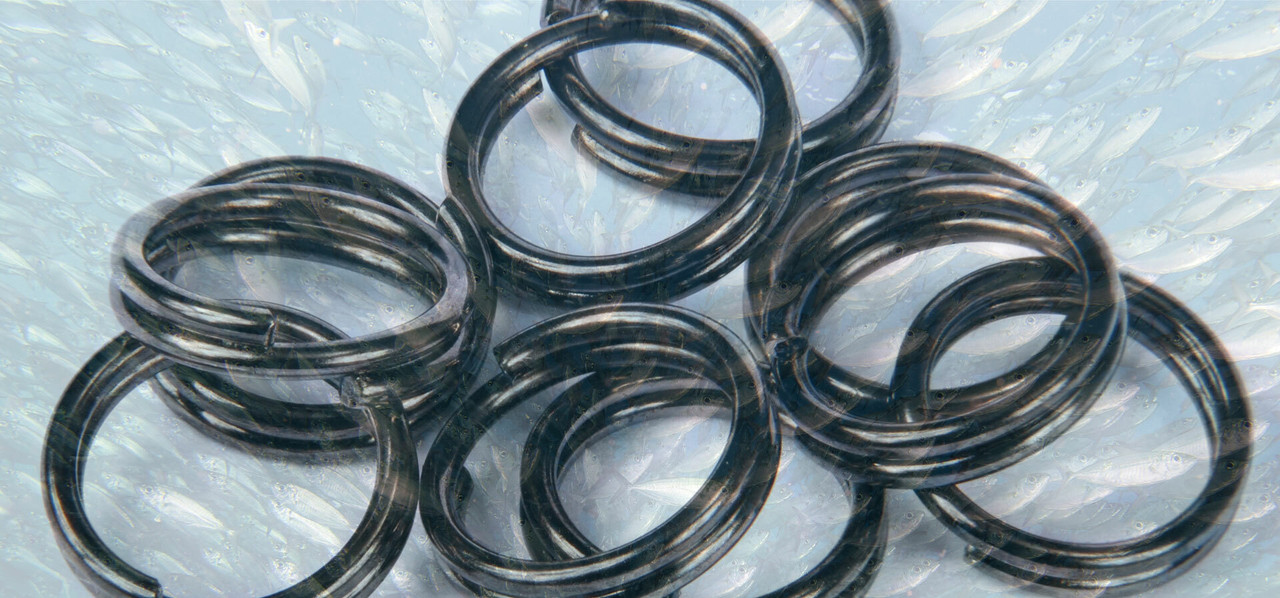A Tackle Shop Guide to Fishing Split Rings
A split ring might seem like a simple component, but it's a high-pressure piece of terminal tackle that can be the difference between landing a big fish and telling a story about the one that got away. This guide will break down what you need to look for in a quality split ring and why upgrading is a smart decision.
A Note From Our Local Experts
"If you’re a lure angler like me, you know that constant saltwater exposure is tough on gear, especially on small components like split rings. There have been a few times I've opened my lure box to grab a favourite lure, only to find the rings are rusted shut. That's exactly why I always carry a few spare packs of quality split rings in my tackle bag. It means I can quickly restore any lure and get it back in the water right there on the spot."
- Ben Czulowski, Fishing Tackle Shop (Ocean Storm) | Experienced fishing retailer since 2001
Why You Must Replace a Rusty or Pitted Split Ring
A rusty split ring is a ticking time bomb in your tackle system, but not just for the reason you think. While rust does weaken the metal over time, the more immediate danger is the rough, pitted surface it creates. Under the pressure of a fighting fish, this abrasive surface acts like a file, chafing and weakening your leader knot with every headshake. This often results in your leader breaking right at the connection, costing you both the fish and your lure, even though the ring itself didn't fail.
Choosing the Right Split Ring: Standard vs. Heavy-Duty
The strength of a split ring comes down to its material and construction.
✔
Standard Split Rings: Made from standard stainless steel wire, these are a good, affordable option for upgrading the terminals on lures used for light-tackle species like bream, flathead, and bass.
✔
Heavy-Duty Split Rings: This is the non-negotiable choice for serious lure fishing. These rings are made from a higher grade of stainless steel and are often pressed or flattened, which dramatically increases their strength without increasing their size. They are essential for preventing a ring from being pulled open by powerful fish like kingfish, GTs, and big barra.
Pro-Tips for Using Split Rings
- Get the Right Tool for the Job: The single most important tip is to use a pair of dedicated split ring pliers. They have a small, pointed tooth on one jaw that makes opening the ring easy and safe. Trying to use your fingernails or a knife is a fast way to get a hook stuck in your hand and will almost always damage the ring, weakening it.
- The Lure Balancing Act: When changing split rings (and hooks), try to match the weight of the new components to the old ones as closely as possible. Adding a large, heavy-duty split ring to a small, lightweight lure can kill its natural swimming action.
- Check Them After a Big Fight: After a long, tough fight with a powerful fish, always give your split ring a quick visual inspection. Check to see if the coils have been stretched or if there's any sign of a gap. If there is, replace it immediately.
Frequently Asked Questions
Why should I upgrade the split rings on my lures?
Because the factory-fitted split rings are often the weakest link. They are typically made from lower-grade metal that can be easily pulled open by a powerful Australian fish. Upgrading to a high-quality, heavy-duty split ring is a cheap and essential piece of insurance to prevent losing both the fish and your expensive lure.
How do I choose the right size split ring?
The goal is to use the smallest and lightest split ring you can get away with that still has a breaking strain well above that of your leader. A ring that is too large or heavy can negatively impact your lure's action. Check the strength rating (in kg or lb) on the packet and choose a size that offers more than enough strength for your target species.
What tools do I need to change a split ring?
The only tool you should ever use is a pair of dedicated split ring pliers. Their specially designed tip opens the ring easily without damaging the metal or risking injury. They are an essential part of any serious lure angler's toolkit.
How can I tell if a split ring is good quality?
A high-quality split ring will be made from a good grade of stainless steel and will have a tight coil with no visible gaps. Crucially, when you open it with a pair of pliers, it should have a good "spring back" memory and return to its original closed shape. A low-quality ring will often stay slightly open, creating a weak point.



